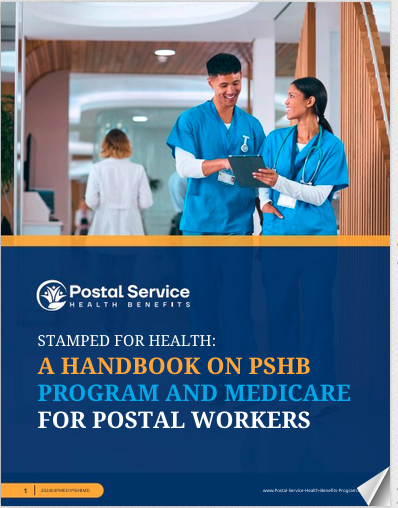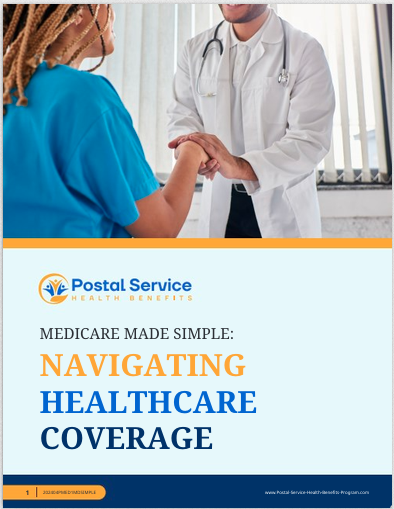Key Takeaways:
-
Transitioning to Postal Service Health Benefits (PSHB) plans requires careful attention to Medicare enrollment timelines and integration.
-
Understanding how Medicare complements PSHB plans can help you make informed decisions to optimize your health coverage.
The Importance of Medicare for PSHB Transition
As a Postal Service worker or retiree, you’re navigating one of the most significant changes to your health coverage in decades. With the shift to Postal Service Health Benefits (PSHB) plans this year, aligning your Medicare enrollment is crucial. Proper coordination can ensure you maintain comprehensive coverage while avoiding unnecessary costs or lapses in care.
What Is the PSHB Program?
The PSHB program officially replaces the Federal Employees Health Benefits (FEHB) system for Postal Service employees, retirees, and their eligible family members. This change brings tailored health coverage options specific to the postal workforce, aiming to streamline benefits and improve affordability. However, this transition comes with requirements—particularly for Medicare-eligible members.
Medicare and PSHB: A Vital Connection
If you’re eligible for Medicare, understanding how it integrates with PSHB plans is critical. PSHB plans often include enhanced benefits for those enrolled in Medicare Part B, such as reduced deductibles, lower out-of-pocket costs, and prescription drug coverage improvements. Enrolling in Medicare ensures you’re positioned to take full advantage of these benefits.
Why Medicare Part B Enrollment Matters
Medicare Part B, which covers outpatient care, doctor visits, and preventive services, is a key component for PSHB enrollees. Without Part B, you may face higher costs or limited coverage for certain services under your PSHB plan. Additionally, PSHB enrollees who are Medicare-eligible must enroll in Part B to maintain their coverage unless they meet specific exemptions.
Navigating Enrollment Timelines
Timing is everything when it comes to Medicare enrollment. Missing critical deadlines can result in penalties or gaps in your coverage. Here’s a breakdown of the key enrollment periods to keep in mind:
Initial Enrollment Period (IEP)
Your IEP begins three months before the month you turn 65, includes your birthday month, and extends three months afterward. This seven-month window is your first opportunity to enroll in Medicare Parts A and B.
General Enrollment Period (GEP)
If you miss your IEP, you can enroll during the GEP, which runs from January 1 to March 31 each year. Coverage begins July 1, but late enrollment penalties may apply.
Special Enrollment Period (SEP)
For those transitioning from active employment to retirement, the SEP allows you to enroll in Medicare without penalties after your IEP ends. This period lasts eight months following the end of your employer-sponsored coverage.
Annual Open Enrollment Period
The Medicare Open Enrollment Period, from October 15 to December 7 each year, lets you review and make changes to your Medicare coverage. This period is especially important if you’re adjusting your PSHB plan.
Benefits of Aligning Medicare with PSHB
By integrating Medicare with your PSHB plan, you unlock several advantages that enhance your overall healthcare experience:
-
Lower Out-of-Pocket Costs: Medicare typically pays first for covered services, reducing your share of expenses under the PSHB plan.
-
Improved Prescription Coverage: With Medicare Part D integration, PSHB plans offer enhanced drug benefits, including the new $2,000 annual out-of-pocket cap.
-
Comprehensive Care Coordination: Combining Medicare and PSHB ensures seamless access to a broader range of services, minimizing gaps in coverage.
Avoiding Common Pitfalls
Transitioning to PSHB and Medicare can be complex, but avoiding common mistakes can save you headaches and money:
Missing Enrollment Deadlines
Failing to enroll in Medicare on time can lead to late penalties and delayed coverage. These penalties are cumulative and permanent, so timely action is essential.
Overlooking Medicare Part B Requirements
Some PSHB plans mandate Medicare Part B enrollment for retirees and Medicare-eligible family members. Without Part B, you may lose access to certain benefits or face higher costs.
Not Reviewing Your Plan Options
Each PSHB plan is unique. Comparing coverage options during Open Season helps you select a plan that aligns with your healthcare needs and budget.
How PSHB and Medicare Costs Work Together
Understanding the cost structure is vital for planning your healthcare expenses. Here’s a snapshot of how Medicare and PSHB work together financially:
Premiums
Medicare Part B requires a monthly premium, which is $185 in 2025. PSHB premiums vary based on the plan you select and the level of coverage. The government covers approximately 70% of PSHB premiums.
Deductibles and Coinsurance
-
Medicare: Part A has a $1,676 deductible per benefit period, and Part B has a $257 annual deductible.
-
PSHB Plans: Deductibles range from $350 to $2,000, depending on whether you choose a low- or high-deductible plan.
Copayments
PSHB copayments for doctor visits and prescriptions often align with Medicare, reducing your overall out-of-pocket costs when both programs are utilized.
Steps to Ensure a Smooth Transition
To make your PSHB transition as seamless as possible, follow these steps:
-
Evaluate Your Medicare Eligibility: Determine if you’re eligible for Medicare Parts A and B based on age or disability status.
-
Enroll in Medicare Part B: If required, complete your enrollment during the appropriate period to avoid penalties.
-
Review PSHB Plan Options: Use Open Season to compare plans and select the one that best meets your needs.
-
Coordinate Benefits: Ensure your Medicare and PSHB plans work together effectively by understanding how claims are processed.
-
Stay Informed: Regularly review communications from Medicare and the Office of Personnel Management (OPM) for updates on your coverage.
Planning for the Future
Healthcare needs change over time, so it’s important to periodically reassess your coverage. Keep these considerations in mind:
-
Annual Notices of Change: Review these documents each year to stay informed about updates to your PSHB and Medicare plans.
-
Healthcare Spending Trends: Track your healthcare expenses to identify areas where you might need additional coverage.
-
Long-Term Care Planning: Consider supplemental coverage or savings plans to address potential long-term care needs.
When to Seek Assistance
Navigating the transition to PSHB and Medicare doesn’t have to be overwhelming. Resources are available to help:
-
Medicare Helpline: Contact Medicare for assistance with enrollment or coverage questions.
-
OPM Support: The Office of Personnel Management provides resources specific to PSHB enrollees.
-
Benefits Counselors: Consult a benefits counselor to get personalized guidance tailored to your situation.
Maximize Your Coverage with the Right Steps
By understanding how Medicare complements PSHB plans, you can make informed decisions that protect your health and finances. Don’t leave your coverage to chance; take the time to explore your options and align your benefits for the best outcomes.






